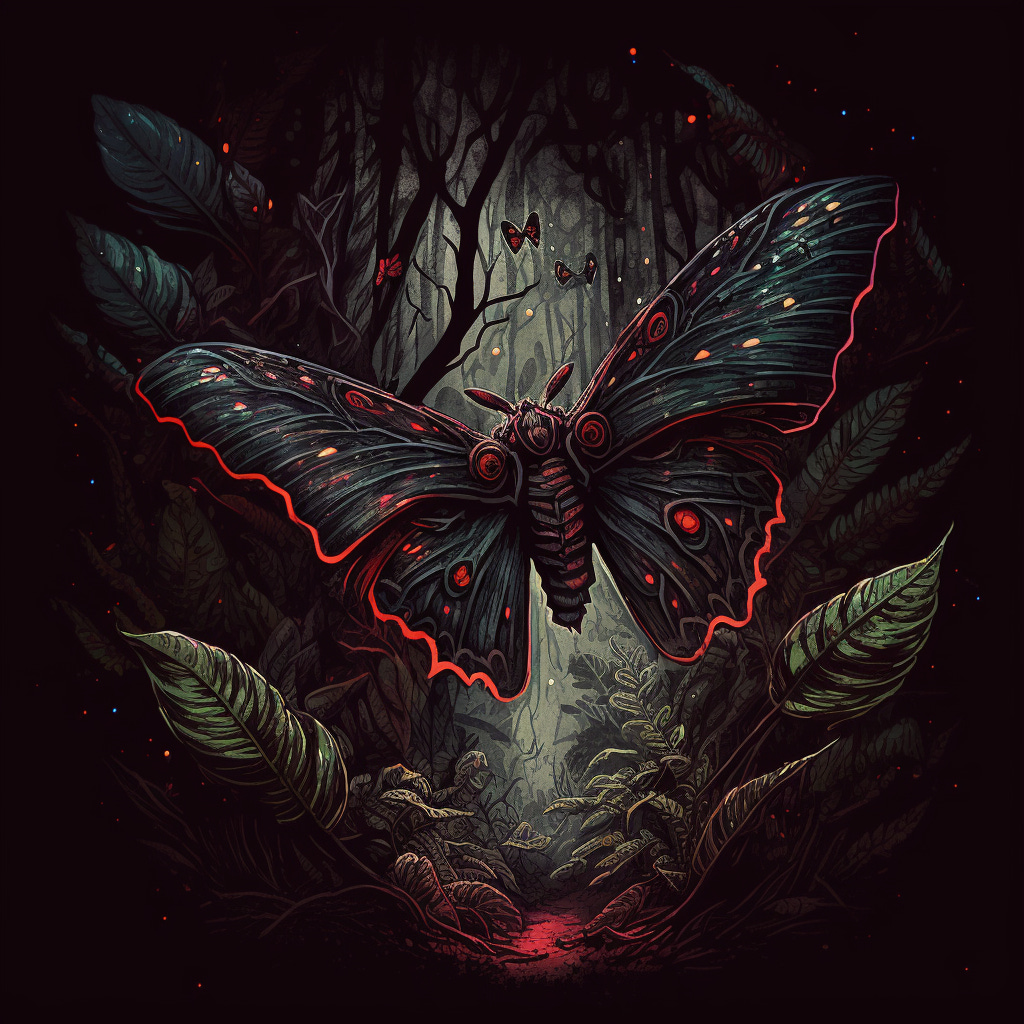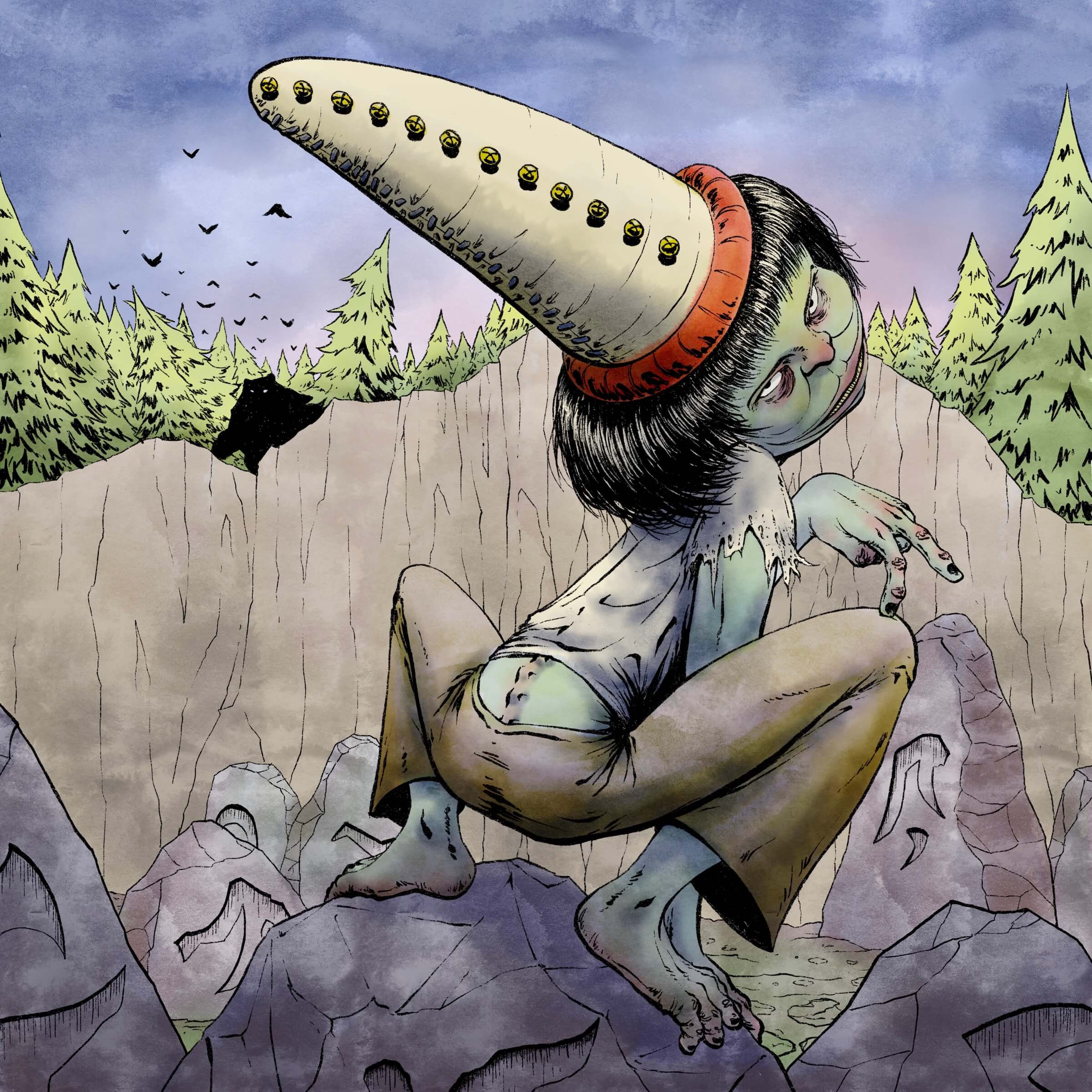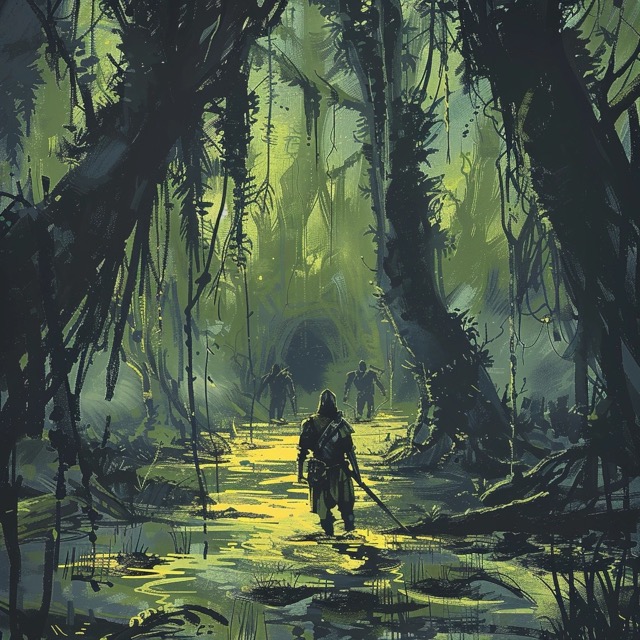The Dragh: A Worry Monster Worth Your Worry

From The Pantheon Fantastical, by Silvana Rhinebeck
Silvana Rhinebeck was a Binder, Professor Emerita at the Magist Imperial University, and Imperial Magus to the Emperor. Her life’s work culminated with The Pantheon Fantastical, a rigorous encyclopedia of the Uncanny Beings of the Meridian. Although it is unfinished due to her sudden disappearance, The Pantheon Fantastical remains the foremost authority on Uncannies and is a key text for all students, scholars, and professionals engaged in the study of the Meridian.
Whispers of the dragh, an infectious, ethereal worry monster, found fertile enough territory to wend their way into written history and legend around 250 AE.
Before trade with the Salavasters was established, the Spice Bazaar but a distant dream, Empress Xisuthros sent many explorers across what was then a more vacant map to search for salts and herbs to refill her ever-growing city’s ever-emptying pantries and cellars.
One of the most famed adventurers of that uncertain time of fledgling imperialism was Commodore Ásbjörn Margeirsson, a daring foreigner from across the Mede Sea.
She went on many illustrious voyages that are not in this author’s purview to describe (see Maeloc Nance’s sedulous history, The Horn of Ásbjörn), save for one: her last. The following is assembled from ship’s logs recovered from Margeirsson’s own quarters.
After two failed expeditions past what became known as the Cape of False Promise, Margeirsson prepared a third, loading and prepping her command ship Zeit for every possible obstacle. Or so she thought.
The pilgrimage commenced with a fortnight of bawdy, joyous seafaring until Zeit’s crew spent a languid, warm night on the tropical Isle of Raum. Only one event of import occurred. The cabin boy Scheun woke up before dawn hysterical, raving about a singular nightmare: That of a slurping, sticky-winged ghost drilling into his skull. The ship’s medic found nothing to fret about when inspecting Scheun, chalking up Scheun’s angst — or dragh — to the charged feelings of pubertal youth.
Unlike most seafarers, Margeirsson’s crew were not overly superstitious, and any worries dissipated when good fortune graced the Zeit immediately thereafter, uncovering an abandoned salt mine that still bore flavorful bounty.
But Scheun’s worries only increased. He began questioning his existence and the very fabric of the Meridian. His nerves were shot, startled by any and all noises, seeing shadows where there were none. He was visited by bouts of mad paranoia, beginning to believe he was a monster and that every one of his fellow sailors wanted him off the ship, for nobody loved him.
An orphan jointly adopted by the Zeit’s crew, Scheun’s perception was ill-conceived. He was well-loved by all, and his torment was not taken lightly. But Scheun had changed, haunted by twisted, spectral encounters with his shipmates that differed ever so slightly from reality. After six days of this torture, Scheun was found hanged in his quarters.
This illness spread. The medic was the next to succumb to a plague of anxiety that held no immunity. Margeirsson was always heralded for her bravery, her keen instinct, always trusting her gut. But now, her gut was rot. Indecision and uncertainty became her permanent bedfellow.
What had the Zeit caught from the Isle of Raum? It was as if Chaos itself had been planted into her hull. Chaos is the most infectious of ills, and the Zeit’s crew found themselves imbalanced beyond repair. Imagined slights and evils danced around every corridor, the sucking, pinioned phantom boring into everyone’s nightmares.
Unfortunately for the citizens of Amalcross, the Zeit made it to their harbors even when all the crew had perished. Their bodies had either been thrown overboard, or burned, or chopped to pieces, the bouquet of rotting flesh wafting across the waves a harbinger for the Zeit’s arrival.
From that day forward, the dragh was a specter upon Amal. Thankfully, larger living spaces and open skies did much to quell the scourge, as did prompt dispatches of anyone suffering from unwarranted anxiety — a subjective diagnosis that led to an overcrowded, underground clinic dug out from a hill outside the city. This quarantine center was in continuous operation for nearly 200 years before the dragh’s true nature was revealed.
It wasn’t until Dr. La Muilinn studied a group of haunted victims that the notion of a ghost was debunked. He and his team of medics discovered that each man and woman suffering from the dragh had a faint trace of mucus that began deep in their eardrum. Using a fresh cadaver, they followed this trail of mucus to the brain, discovering the fuzzy, writhing larvae of a heretofore undiscovered moth.
The dragh was no spirit, but an earmoth that had first burrowed into the minds of Zeit’s crew and then spread across Amal. Once in the brain, the moth’s final act was birth: a clutch of eggs neatly nestled into what we now know as the amygdala, the fear-center of the brain. When the larvae hatch, its human host would rapidly lose control of its mind, then all its faculties, and die — if he or she didn’t take their own life first.
Due to their differences in anatomy (and perhaps social hierarchies, suggests sociological scholar Clarence Gaubold), Salavasters and Rilk’gar are immune to the earmoth.
For humans, our only hope is early diagnosis. Ear candles of melting wax can be used to kill the earmoth larvae well before adulthood, if caught in time; in more extreme cases, lobotomy is also effective. As there is no known cure for the dragh once the larvae leave the brain, there have been multiple periods of rampant over-diagnosis across history.
At present, the dragh is a rarer ailment, known only to strike in the dankest and darkest recesses of Amalcross. For obvious reasons, earmuffs have become a necessary accessory for any who venture to the Isle of Raum.







